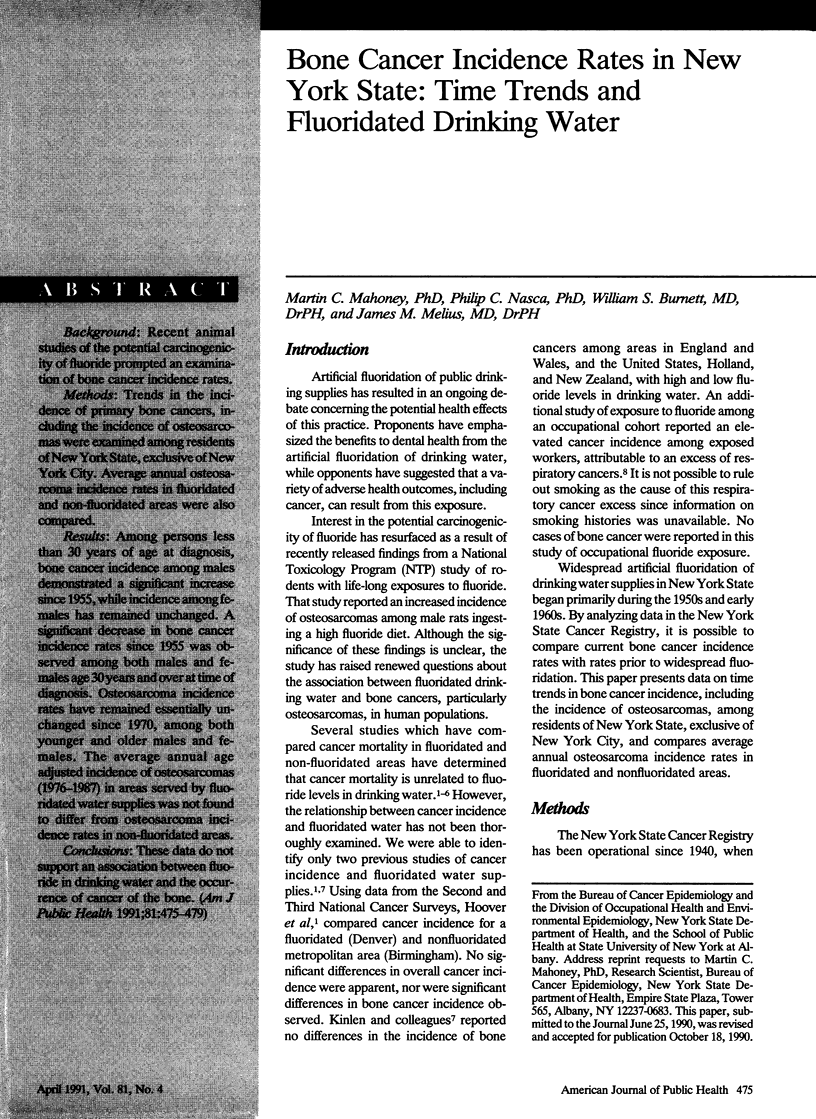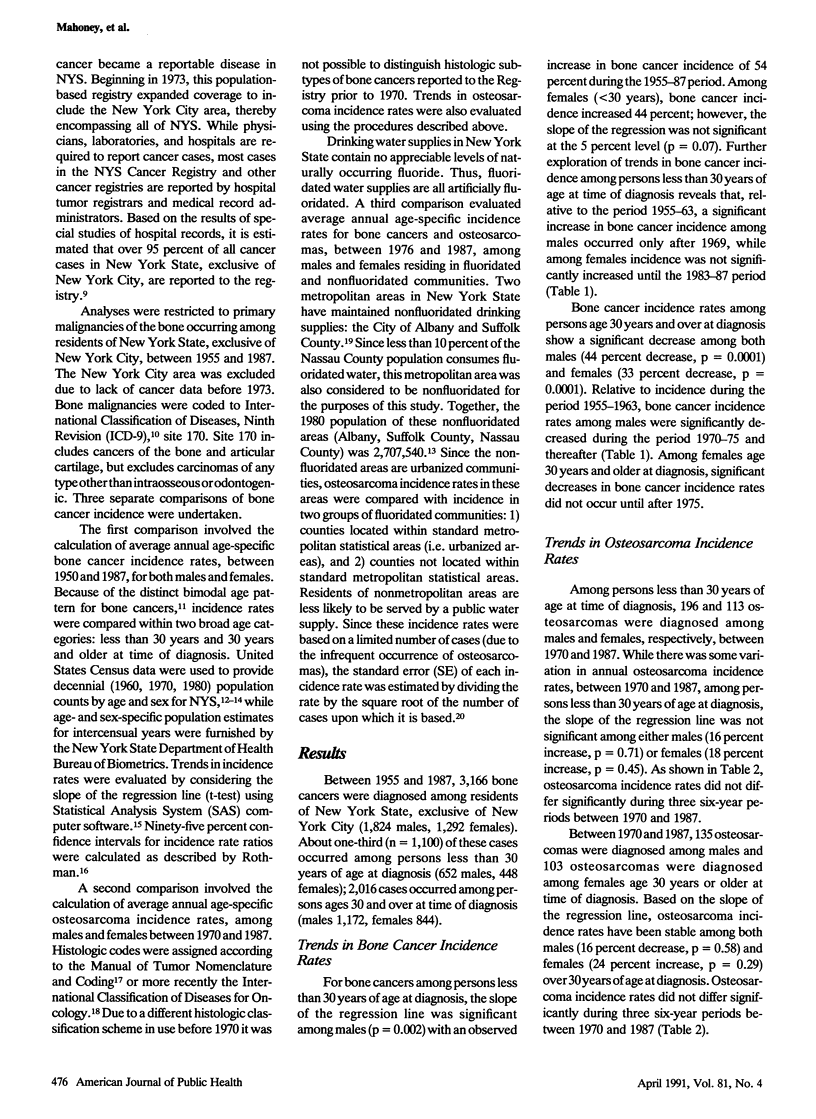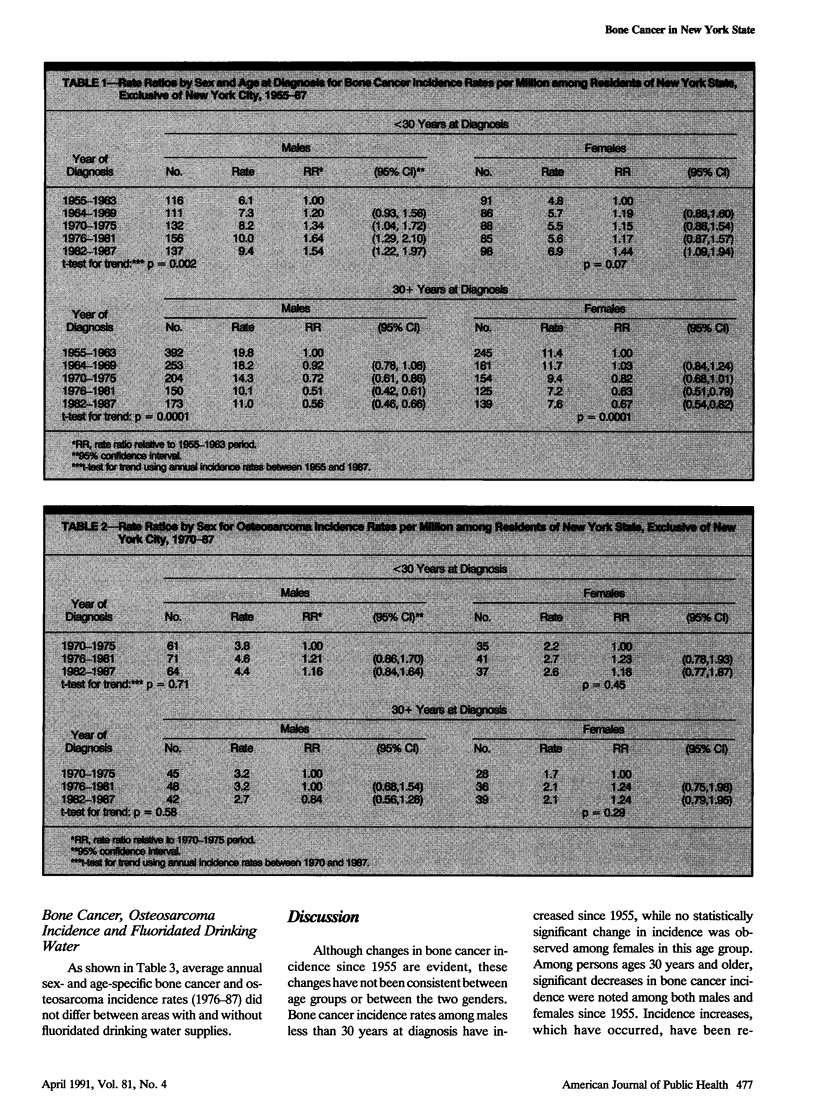Abstract
BACKGROUND: Recent animal studies of the potential carcinogenicity of fluoride prompted an examination of bone cancer incidence rates. METHODS: Trends in the incidence of primary bone cancers, including the incidence of osteosarcomas were examined among residents of New York State, exclusive of New York City. Average annual osteosarcoma incidence rates in fluoridated and non-fluoridated areas were also compared. RESULTS: Among persons less than 30 years of age at diagnosis, bone cancer incidence among males demonstrated a significant increase since 1955, while incidence among females has remained unchanged. A significant decrease in bone cancer incidence rates since 1955 was observed among both males and females age 30 years and over at time of diagnosis. Osteosarcoma incidence rates have remained essentially unchanged since 1970, among both younger and older males and females. The average annual age adjusted incidence of osteosarcomas (1976-1987) in areas served by fluoridated water supplies was not found to differ from osteosarcoma incidence rates in non-fluoridated areas. CONCLUSIONS: These data do not support an association between fluoride in drinking water and the occurrence of cancer of the bone.
Full text
PDF




Selected References
These references are in PubMed. This may not be the complete list of references from this article.
- Chilvers C., Conway D. Cancer mortality in England in relation to levels of naturally occurring fluoride in water supplies. J Epidemiol Community Health. 1985 Mar;39(1):44–47. doi: 10.1136/jech.39.1.44. [DOI] [PMC free article] [PubMed] [Google Scholar]
- Clemmesen J. The alleged association between artificial fluoridation of water supplies and cancer: a review. Bull World Health Organ. 1983;61(5):871–883. [PMC free article] [PubMed] [Google Scholar]
- Cook-Mozaffari P., Doll R. Fluoridation of water supplies and cancer mortality. II: Mortality trends after fluoridation. J Epidemiol Community Health. 1981 Dec;35(4):233–238. doi: 10.1136/jech.35.4.233. [DOI] [PMC free article] [PubMed] [Google Scholar]
- Grandjean P., Juel K., Jensen O. M. Mortality and cancer morbidity after heavy occupational fluoride exposure. Am J Epidemiol. 1985 Jan;121(1):57–64. doi: 10.1093/oxfordjournals.aje.a113983. [DOI] [PubMed] [Google Scholar]
- Griffith G. W. Fluoridation and cancer mortality in Anglesey. J Epidemiol Community Health. 1985 Sep;39(3):224–226. doi: 10.1136/jech.39.3.224. [DOI] [PMC free article] [PubMed] [Google Scholar]
- Hoover R. N., McKay F. W., Fraumeni J. F., Jr Fluoridated drinking water and the occurrence of cancer. J Natl Cancer Inst. 1976 Oct;57(4):757–768. doi: 10.1093/jnci/57.4.757. [DOI] [PubMed] [Google Scholar]
- Kinlen L. Cancer incidence in relation to fluoride level in water supplies. Br Dent J. 1975 Mar 18;138(6):221–224. doi: 10.1038/sj.bdj.4803420. [DOI] [PubMed] [Google Scholar]
- Polednak A. P., Ellish N. J., Nasca P. C. Descriptive epidemiology of primary bone cancers in upstate New York. N Y State J Med. 1984 Apr;84(4):174–177. [PubMed] [Google Scholar]


